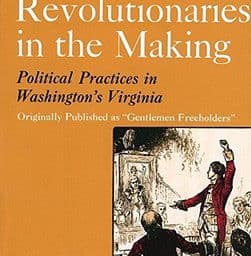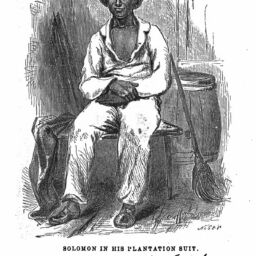Freehling, William W. The South Vs. the South: How Anti-Confederate Southerners Shaped the Course of the Civil War. Oxford; New York: Oxford University Press, 2001.
1. Thesis: The U.S. is not the only “house divided” during the Civil War. Divisions between white and black, pro- and anti-Confederates, and varying loyalty of the Upper and Lower South states to slavery all contributed greatly to the fall of the Confederacy. “Divisions within the South helped pave the path toward war. The same divisions behind army lines helped turn the war against the slaveholders.” (p. xi)
2. Structure: WilliamFreehling weaves a chronological account of the Civil War. He alternates between military event descriptions and background information on the social, political and economic impact of these events as they related to the participation (or lack thereof) of Southerners. Accounts are included from Lincoln, Davis, various politicians, military officers, abolitionists, and other major figures.
3. Evidence:
- The Three Souths – Upper South neutrality reduces Confederate geography, increases Unionist manpower and supplies, offers information, economic advantages and unfettered access into Middle and Lower South, offers tactical location advantages in Kentucky and naval advantages in Baltimore (pg. 40-50). The Middle South followed suit with their ambivalence about the Confederacy. Lower South was the nexus of white slaveholders of Confederacy – the Slave Power minority. Lee’s strategy affected by white and black Anti-Confederates – “The quest for allies to counter the Union’s constantly more crushing numbers helped shape Lee’s military strategy.” (p. 178)
- White vs. White – (white belts) non-slaveholders in Border South majority of population “felt less brotherhood with slaveholders” (p. 22), Border cities (Baltimore, Louisville, St. Louis) “resembled northern more than Lower South cities…all traded predominantly with the North. All developed Yankee-style factories and growth rates…All generated Yankee-style politics.” (p. 23), “The eight Border and middle South states stood against the new Confederacy when Abraham Lincoln assumed the presidency.” (p. 40), filibustering (p. 59-60), Cleburne’s suggestion to emancipate southern blacks to help with war effort (discussions suppressed by Davis) (p. 194)
- Black vs. White – (black belts) Collaboration, contrabands, garrisoning, emancipation, arming. Non-violent collaborating fugitive slave resistance (flight). They fled their masters in droves, spied, labored to build fortifications and eventually filled the fighting ranks. General Order #3 (p. 88-98), “Lincoln had forged a partnership with slaves that could be lethal to slaveholders.” (p. 125), 1 in 8 slaves (12.5%) went North (p. 128), “Whites’ acceptance of the Thirteenth Amendment rewarded blacks for their astutely nonthreatening agency in their own liberation.” (p. 135), “twenty nigger exclusion” for rich created “rich man’s war, poor man’s fight” division in South (p. 145), Field Order 15 – slaveholder land redistributed to blacks (p. 165)
- Lincoln’s soft-war ambiguity on slavery – Divided pre-war Southern opinion – “His ambiguity helped divide the southern house against itself throughout the secession crisis.” (p. 33) Some Southerners divided on Lincoln, others like Kentuckian John Hunt Morgan wanted to “give him a fair trial” (p.38). Proposed an amendment declaring, “the federal government shall never interfere with the domestic institutions of the States.” (p. 39), “my official duty…is to save the Union, and is not either to save or to destroy slavery. If I could save the union without freeing any slave I would do it, and if I could save it by freeing all the slaves I would do it.” (p.87), Gen. Order #3, (p.88-98), offer to remove all blacks to Latin America (p. 108)
4. Convincing/Criticisms? The book reveals the diversity of the South, even in wartime, as well as how the structure surrounding slavery proved to be a blight on labor, military manpower, industrial, political and social needs of the Confederacy in wartime. While these divisions contributed to the hemorrhaging of the Confederacy, they are not the only reason for the Confederate loss, but an important factor nonetheless.
The author at times reveals his love affair with Lincoln, attributing all of the benefits derived from Southern divisions to some shrewd plan by Lincoln, as if he played the South like a violin all along. Lincoln struck a line of soft-war appeasement attempts all the way until January 1, 1863. After the Emancipation Proclamation, he finally switched course to hard-war strategies. I think it simply came down to trying the former and, upon its failure, ultimately resorting to the latter.
Freehling also uses a couple of phrases that sound strange for this book. These include “papal bulls to comets” (appears three times) and the passage where Baltimore “vomits” (p. 50). Otherwise, the book is a solid account of the problematic Southern divisions that benefitted the North.
Unionist racism is an interesting revelation in the book. It would be interesting to dig deeper into this aspect. Is Lincoln, the Great Emancipator, a racist? It sounds like it when he says on page 108 “not a single man of your race is made the equal of a single man of ours” when he offers blacks to be removed to Latin America. Sherman’s racist views are also revealed later on page 165 – “I like niggers well enough as niggers, but when fools & idiots try & make niggers better than ourselves I have an opinion.” A further and more in-depth examination of Union racism is warranted.



